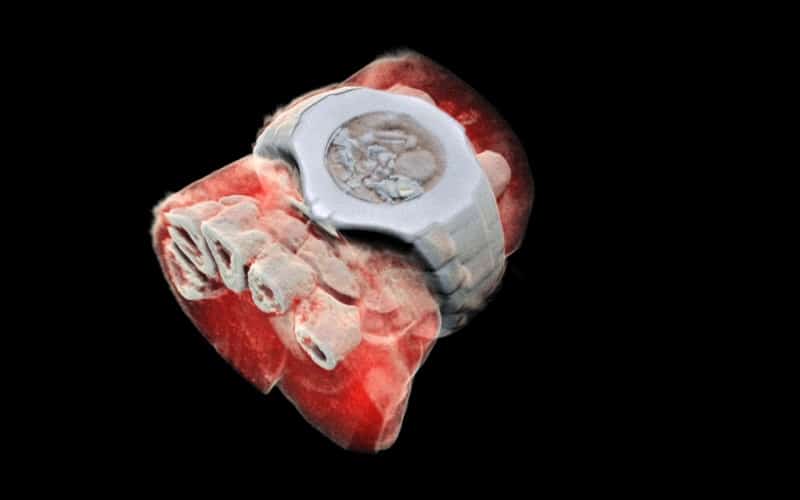A father and son from New Zealand have developed a new type of 3D scanner using the same technology that detected the Higgs Boson particle at CERN.

The MARS spectral x-ray scanner is the brainchild of Prof Phil Butler, a physicist working at the University of Canterbury, and his son Anthony, a radiologist and Professor at both the Universities of Otago and Canterbury. It uses Medipix3 detector technology developed at CERN to measure the individual energy of each x-ray photon. This enables the scanner to create incredibly detailed 3D images of its subject. According to the Butlers, the device could herald a revolution in medical diagnostics.
"X-ray spectral information allows health professionals to measure the different components of body parts such as fat, water, calcium, and disease markers, “ said Prof Anthony Butler. “Traditional black-and-white x-rays only allow measurement of the density and shape of an object.
"So far researchers have been using a small version of the MARS scanner to study cancer, bone and joint health, and vascular diseases that cause heart attacks and strokes. In all of these studies, promising early results suggest that when spectral imaging is routinely used in clinics it will enable more accurate diagnosis and personalisation of treatment."

According to father Phil, the small pixels and accurate energy resolution that the Medipix3 delivers is what sets the MARS scanner apart. The elder Butler was, in fact, the first human to be scanned with the device, when it was used to image his wrist and ankle.
"As a new imaging device, a new microscope if you like, biomedical researchers can non-invasively see different kinds of detail inside patients,” he said.
Small versions of the scanner that can house tissue samples are already in use in research institutions around the world. The next phase of development will be an imminent clinical trial where orthopaedic and rheumatology patients from Christchurch will be scanned. This will allow the MARS team to compare the images produced by their scanner with the technology currently used in New Zealand hospitals.




Poll: Should the UK’s railways be renationalised?
Presumably the political fallout would be that the rail users would complain that they were being taxed unfairly to subsidise the people going about...